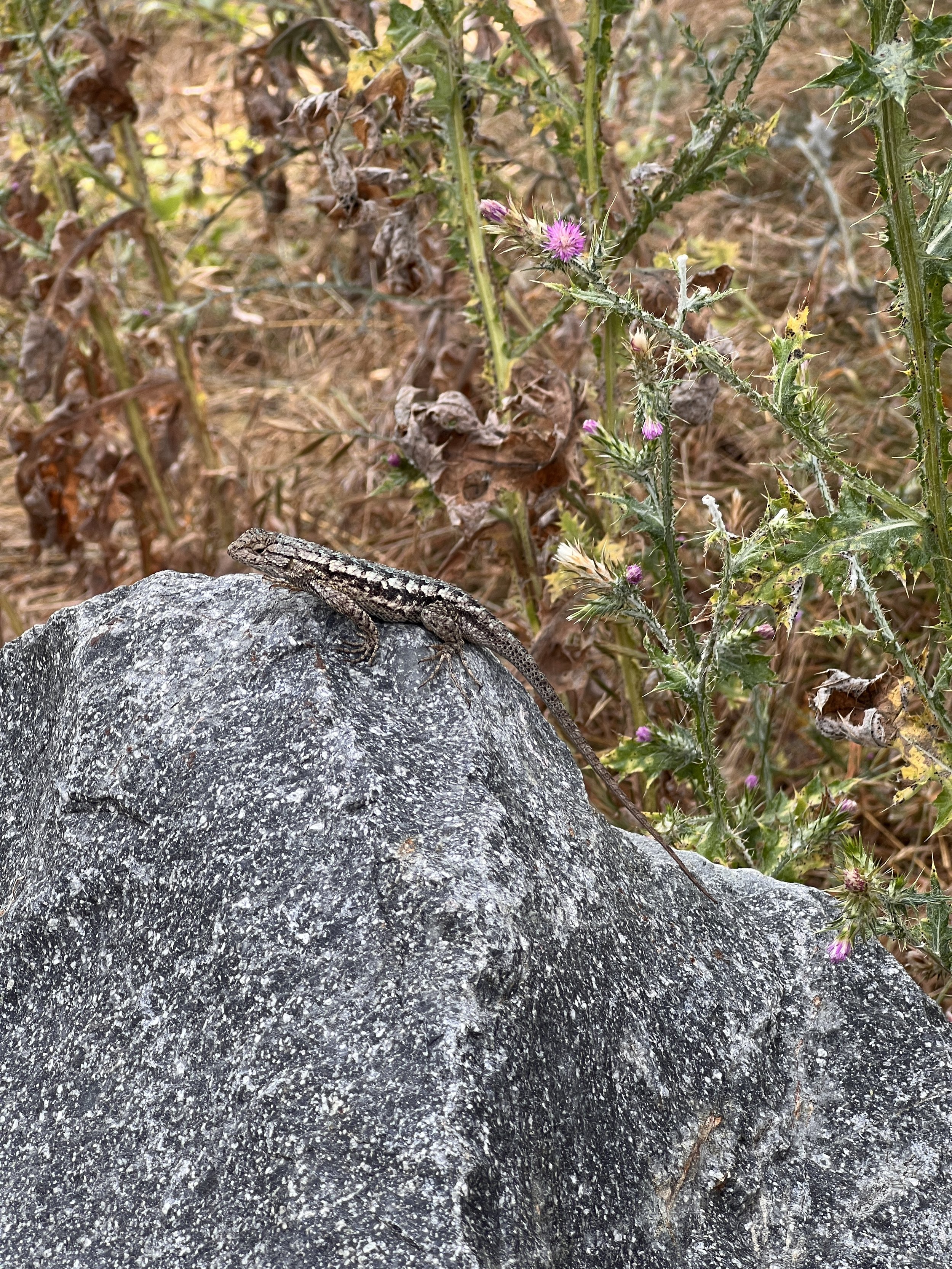Lizards On The Move
When I was an undergraduate student part of my research looked at the movement and microhabitat preference of three lizard species, yarrow’s spiny lizard, the ornate tree lizard, and the striped plateau lizard. I found that they didn’t really move more than 5-20 meters. We hypothesized that the lizards moving the most were not running along the bottom of the winding canyon but instead climbing to the top and navigating a shorter distance that way. They’d cut across a straight line vs winding with the canyon floor.
In a 2024 report, the United States Geological Survey predicts that 63% of the 130 western lizard species they used in their model are going to be moving significantly north and into higher elevations by the end of the century due to climate change.
Why would lizards be moving north?
Even lizards can overheat. Thermoregulation is not just going into the sun to warm up, it’s also finding shade to cool down. However, if even the shade and refuge is too hot, our species won’t be able to survive.
They’ll have to find more temperature suitable habitats.
You on the other hand are searching for a western fence lizard, Sceloporus occidentalis.
I think one of the most interesting parts of the report is that the two states most likely to see more lizard species are Idaho and Colorado. Both states have large deserts on their southern borders and large elevation gradients.
Other states in the southwestern US are predicted to become inhabitable for species like the pygmy short-horned lizard or the dunes sagebrush lizard.
Despite this news, we can still protect our species by adopting sustainable habits and voting for climate positve measures.
I hope you #FindThatLizard. Let me know if you did in the comments!


